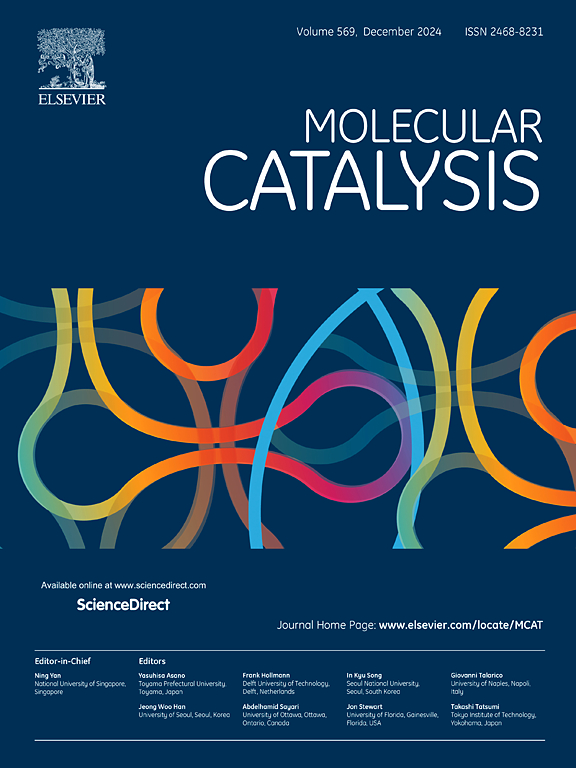Wide spectral response enables efficient photochemistry-assisted selective hydrogenation of butadiene over Pd/N-TiO2
IF 3.9
2区 化学
Q2 CHEMISTRY, PHYSICAL
引用次数: 0
Abstract
Selective hydrogenation driven by heat is a critical industrial process for purifying alkene feedstocks with serious problems of energy and H2 consumption. Photochemistry-assisted strategy offers a sustainable alternative owing to its superiority of H2-free reaction under ambient temperature, unfortunately, with a challenging demand on efficient catalysts. Herein, a wide-spectrum-responsive Pd/N-TiO2 photo-thermal catalyst was developed by a solvothermal method for photochemistry-assisted selective hydrogenation of butadiene in propene. It shows an excellent catalytic performance, with 100 % alkenes selectivity and 100 % butadiene conversion under irradiation of full-light (i.e., 320 nm∼780 nm). Notably, over 53 % butadiene conversion with 100 % alkenes selectivity was successfully retained on Pd/N-TiO2 after shortening the wavelength range to visible light, much superior to that on Pd-TiO2 (i.e., <1 % butadiene conversion). Further exploration reveals that the nitrogen doping extends the light-responsive wavelength of titanium oxide from ∼380 nm to above 500 nm owing to the formation of Ti3+ and oxygen vacancies, which later create a defect energy level (i.e., ∼-0.53 to -0.12 eV) between the valence-conduction band of TiO2. The wide spectral response of N-TiO2 enhances the water photolysis to produce intermediate hydrogen ([H]) that acts as the hydrogen source for the tandem butadiene hydrogenation over the Pd surface. The work indicates that developing a dual-functional catalyst with an expanded light-responsive wavelength is an efficient way to enhance the photochemistry-assisted selective hydrogenation.

求助全文
约1分钟内获得全文
求助全文
来源期刊

Molecular Catalysis
Chemical Engineering-Process Chemistry and Technology
CiteScore
6.90
自引率
10.90%
发文量
700
审稿时长
40 days
期刊介绍:
Molecular Catalysis publishes full papers that are original, rigorous, and scholarly contributions examining the molecular and atomic aspects of catalytic activation and reaction mechanisms. The fields covered are:
Heterogeneous catalysis including immobilized molecular catalysts
Homogeneous catalysis including organocatalysis, organometallic catalysis and biocatalysis
Photo- and electrochemistry
Theoretical aspects of catalysis analyzed by computational methods
 求助内容:
求助内容: 应助结果提醒方式:
应助结果提醒方式:


